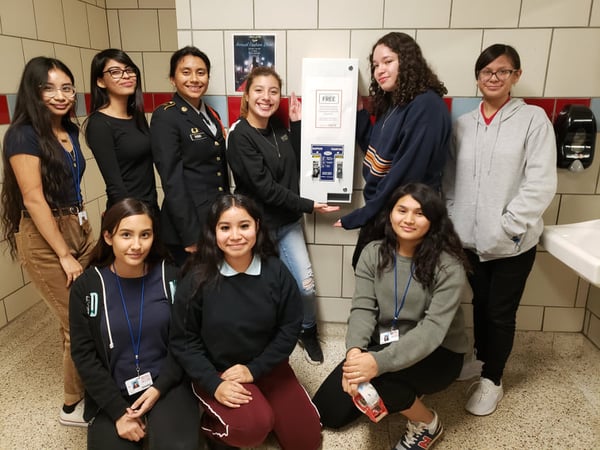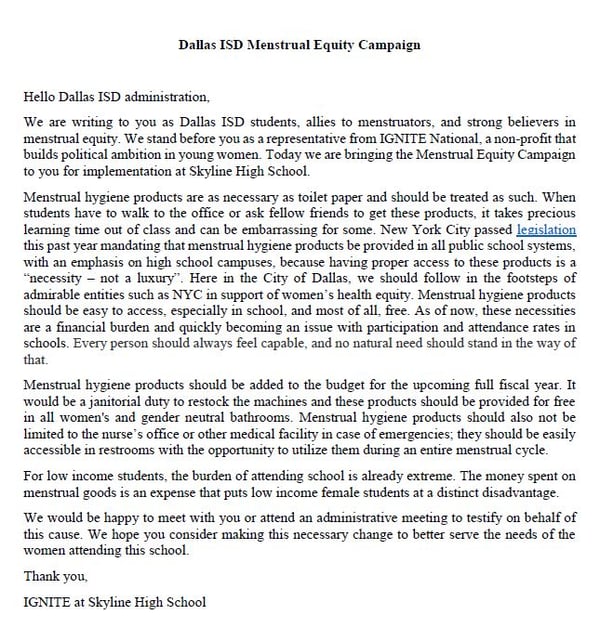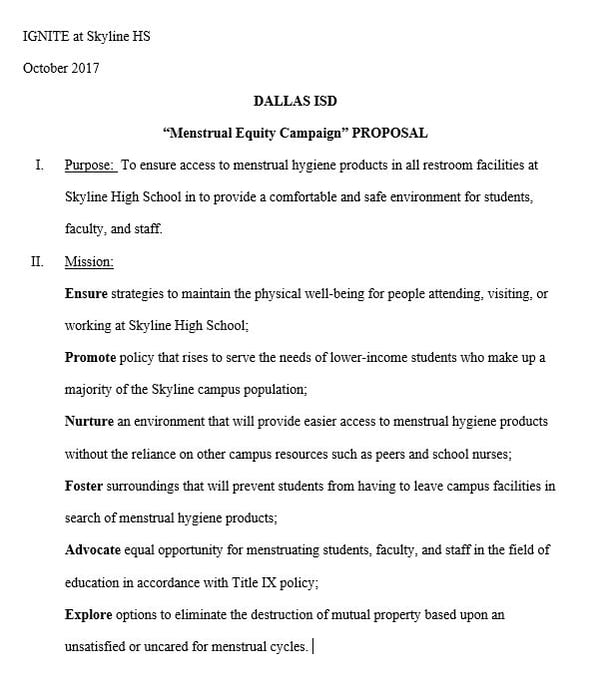Make a change in your community with legislative advocacy
.png)
Legislative advocacy is one of the most effective ways to make a change in your community. One way to go about advocacy is to draft and present a policy proposal. A policy proposal is what you bring to elected officials or decision-makers about a certain policy or issue. But before reaching out to elected officials, it’s important to define your end goal and choose which level of government your policy proposal affects (state, county, municipal, or school board). After that, it’s time to start creating your pitch and policy proposal.
Preparing your policy pitch
The pitch is a one-page, succinct summary of your entire project and tells the story of the issue you are advocating about. For example, students at a Dallas ISD high school wanted to have menstrual hygiene products available in their restrooms for free. They titled this project “Dallas ISD Menstrual Equity campaign” and created a document detailing what they wanted to change and why. If you feel comfortable, you can also address why this specific issue impacts you or your group.

IGNITE National students at Skyline High School who successfully advocated to bring free menstrual hygiene products to their school.
An important part of creating a pitch is addressing and engaging the current stakeholders, including but not limited to:
- Board of Trustees
- Other nonprofit groups
- Other advocacy groups
- Elected officials who are in support of your issue
- Press

Pitch written by Brooke Lopez for the Dallas ISD Menstrual Equity Campaign
The pitch is presented before the initial meeting with elected officials, and can also be sent through email. At the end of your pitch, make sure to present your ask again and request to have a meeting either over the phone or in-person.
The next step is to create your proposal, which is much more detailed.
How to create a policy proposal
The proposal is a living document that continues to grow as you add research and learn more about implementing change. This proposal should be around 3-5 pages. Start off your proposal with a one-sentence mission statement and identify your purpose. Your purpose can be a personal appeal, but the points you bring up must be backed up by research later on in the proposal. Here’s what else should go in your policy proposal:
- Include critical research (hyperlink every resource)
- Gather personal stories (nothing is more powerful than personal stories)
- List initiatives/goals of the project
- Engage all audience types (i.e. be clear. If using jargon, make sure to explain what it means)
 Proposal written by Brooke Lopez for the Dallas ISD Menstrual Equity Campaign
Proposal written by Brooke Lopez for the Dallas ISD Menstrual Equity Campaign
A crucial part of creating the proposal is making sure to answer or address any questions or counter-arguments. This can be in its own section, but addressing counter-arguments helps to further strengthen your proposal. Once you’ve completed this process, you are ready to present your policy proposal during the initial meeting with elected officials/stakeholders.
After you’ve presented your policy proposal, you can use social media to keep pressuring elected officials. Another way to pressure your elected officials is to organize lobbying trips and invite others to advocate for your issue. Remember, there is power in numbers.
Interested in learning more about policy proposals? Check out the full webinar here.
A special thanks to Brooke López for the content included in this post. Brooke is an alumna of IGNITE and the founder of Lone Star Parity Project. Lone Star Parity Project is a non-partisan initiative dedicated to sharing the stories of women and femmes in Texas politics. You can learn more about Brooke and her work on her website.
